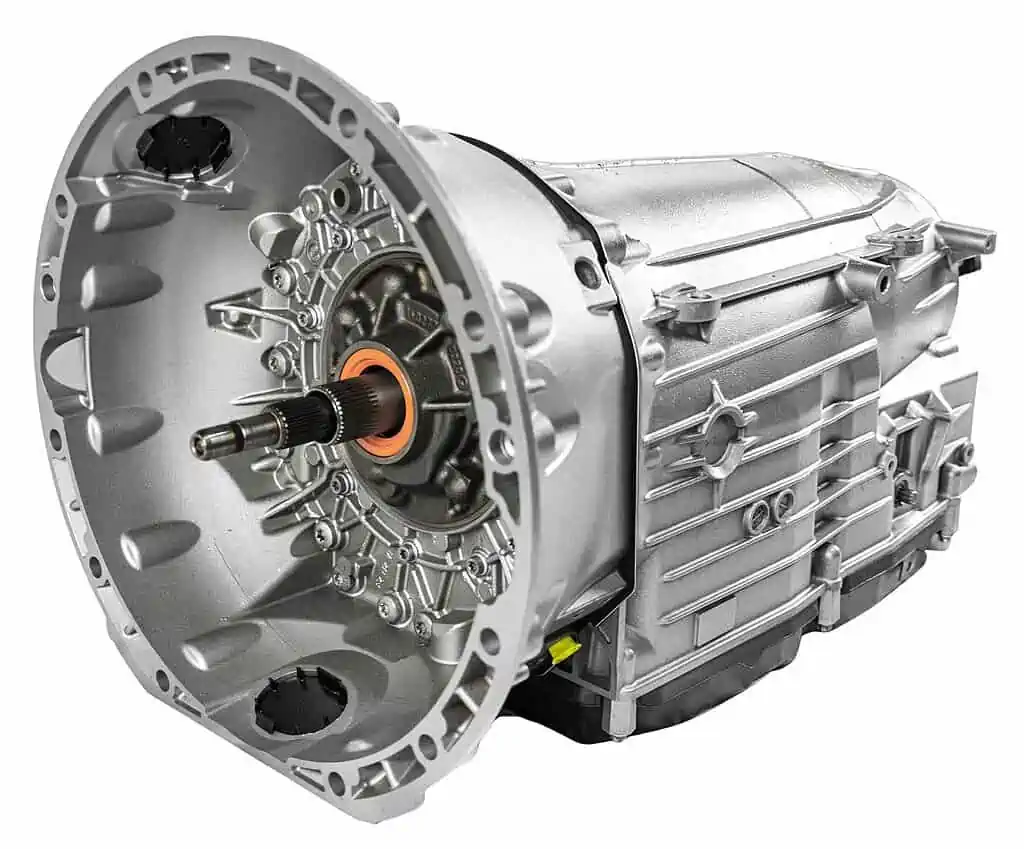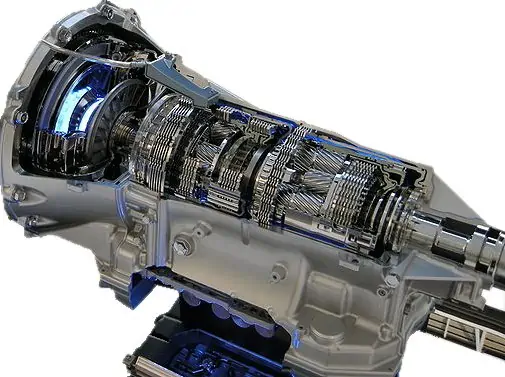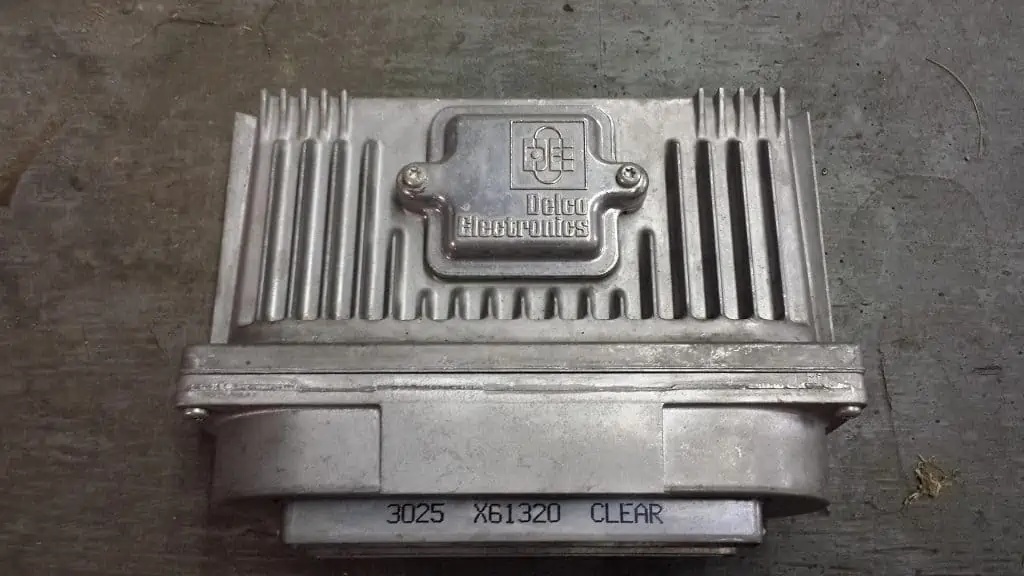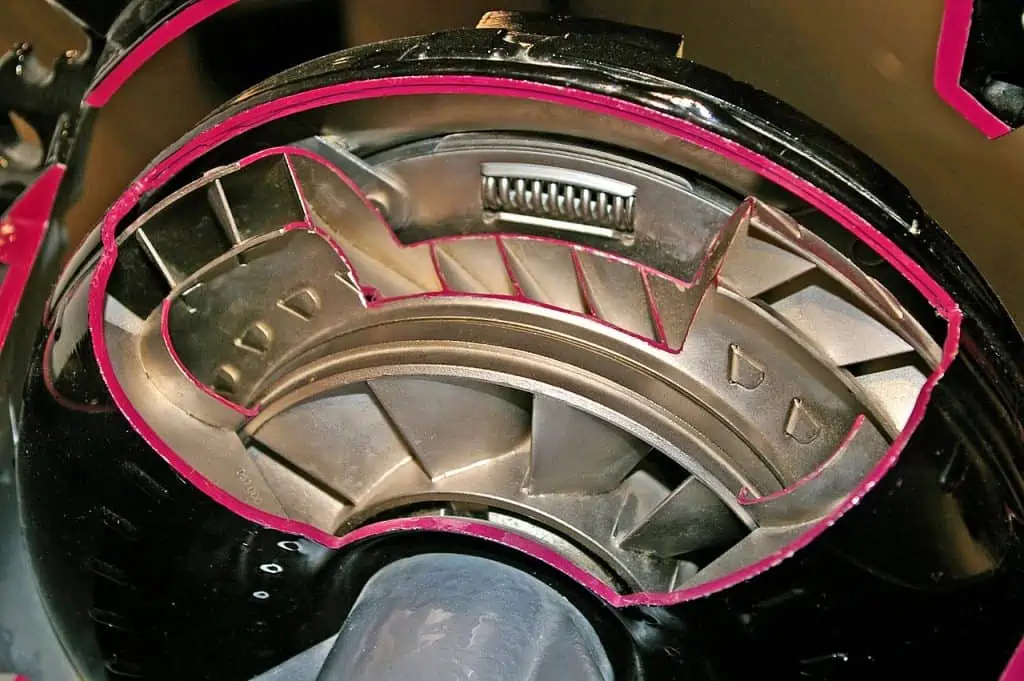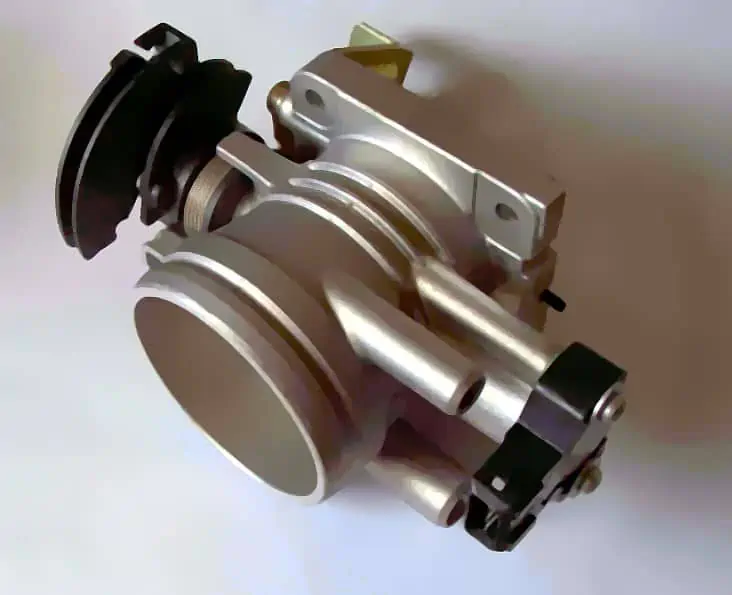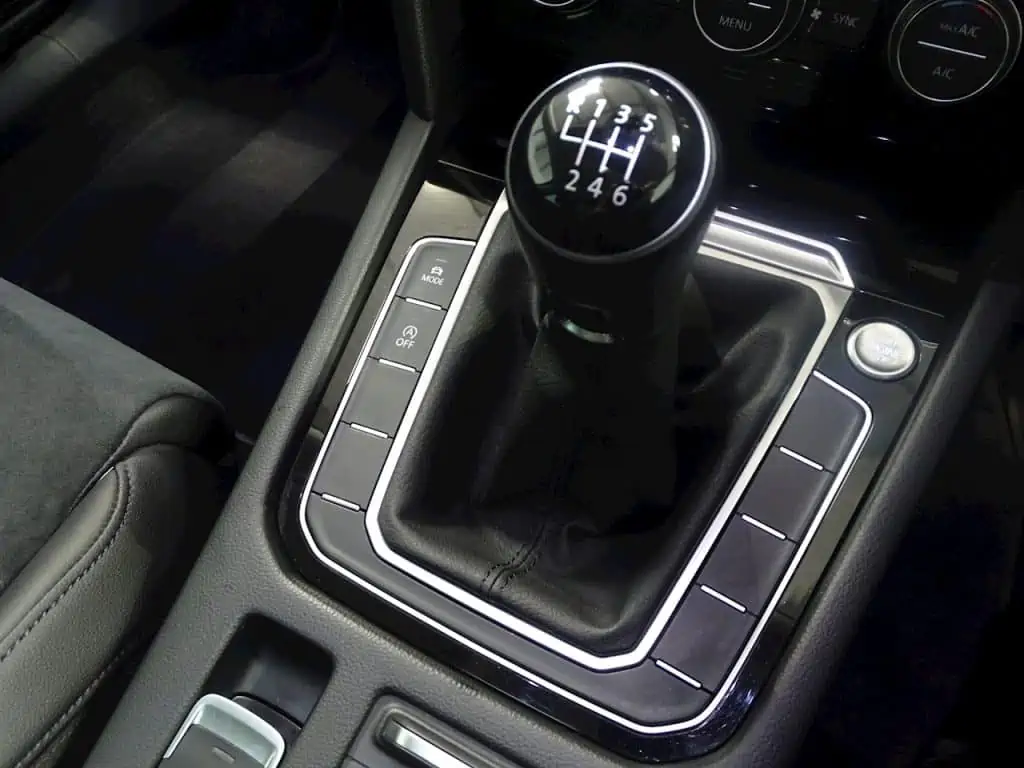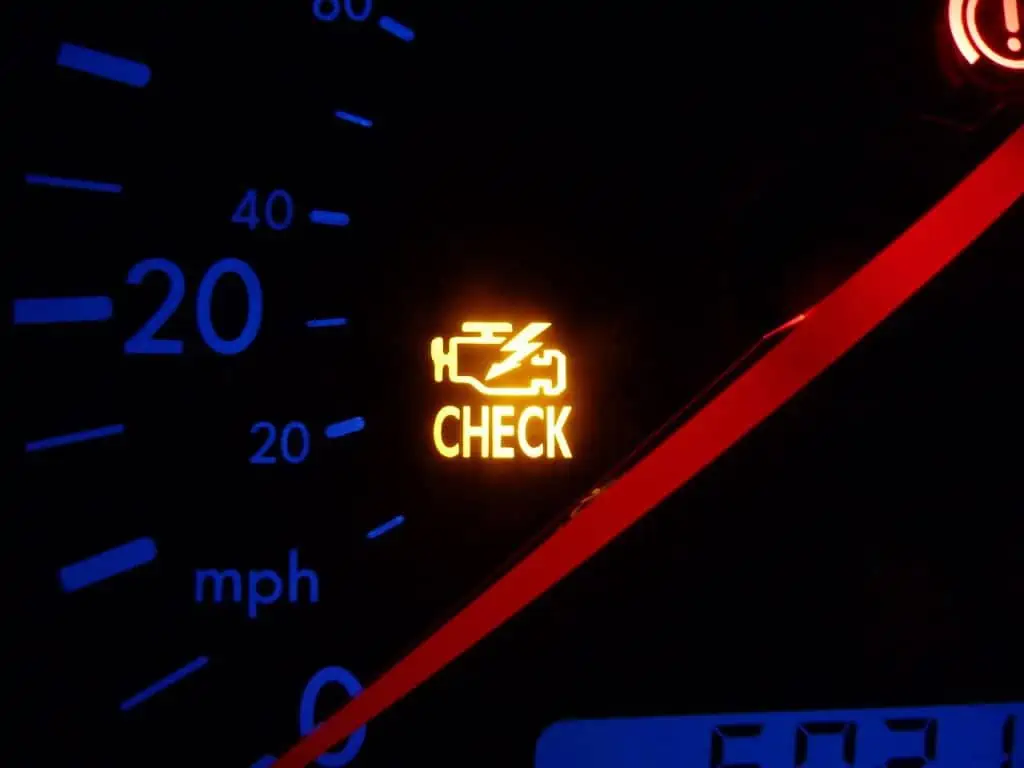The gearbox control unit (GCU) or transmission control module (TCM) are other names for the transmission control unit (TCU). It is a kind of vehicle ECU that manages automatic gearboxes using electronic controls. Throughout your car’s life, the TCM is probably not something you’ll ever need to replace or fix.
But occasionally, just like any other part of your vehicle, your TCM may malfunction. It’s critical to get in touch with a mechanic right away for transmission control module repair prices in the event of a defective TCM.
A crucial part of every road-going car with an automated gearbox system is the transmission control module. A TCM unit is standard in the majority of contemporary cars, which is convenient compared to depending on mechanical or hydraulic control.
Similar systems are used just for clutch automation and actuation in combination with a variety of semi-automatic gearboxes. Modern automatic transmissions typically incorporate sensors from the car in their TCUs.
Additionally, it makes use of information from the engine control unit (ECU) to determine how and when to shift gears in the car. This is for maximum efficiency, shift quality, and performance.
A Transmission Control Module: What Is It?
To keep you and your passengers moving ahead, your car’s transmission control module interacts with the engine and the transmission.
The car transmission by Leoiii6382 / CC BY 4.0. Because it creates a crucial connection between your engine and the transmission system, the control module is a crucial element of your driving experience.
This section determines when and under what circumstances the current gear should be changed. It also improves the quality of your driving experience.
In addition to its primary duty, this control module has the potential to communicate OBD2 codes to the computer in your vehicle. If your car’s gearbox malfunctions or experiences any other problems, the OBD2 codes will be delivered. The check engine light on your dash will flash when one of these codes is present. It warns you that there could be an issue with the engine.
Where Is the Transmission Control Module (TCM) Located In a Car?
Inside your vehicle, the transmission control module is often found under the center console. Additionally, it could be found in the transmission itself.
Depending on the type of vehicle you drive, this is highly varied. You may find the gearbox control module anyplace in your vehicle.
You should consult the repair manual to determine the precise position of the gearbox control module for your specific vehicle model. You may also enquire about its precise location with your authorized dealer.
Even inside the gearbox, transmission control modules can occasionally be fitted.
How Important Is the Transmission Control Module for a Car?
The control module is an essential component of your driving experience because it establishes an essential connection between your engine and the transmission system. Your vehicle wouldn’t be able to shift into the right gear when necessary without a fully functioning module.
This may eventually result in not just a poor driving experience, but also significant mechanical problems. If ignored, these problems can need pricey repairs. Additionally, these timely adjustments increase your car’s overall efficiency. Over time, you can stretch each gallon of fuel you put into your car’s fuel tank further.
Additionally, these components are made to enhance how smoothly your transmission system shifts. This indicates that changing gears is a smoother, more effective procedure that is less demanding on the gears. As a result of less gear wear and tear, your transmission will last longer and be in better condition.
Additionally, the component’s capacity to transmit codes to the car’s computer makes it a great method to spot transmission issues before anything goes wrong below the hood. This can also help shield your vehicle from potentially severe damage and costly, time-consuming repairs.
The Transmission Control Module’s History
Since the late 1980s, the design of electronic automatic gearboxes has evolved from simply hydromechanical controls to electronic controls. Since that time, progress has been iterative, and designs from various stages of the development of electronic automatic transmission control are still in use today. One essential part of these control systems is the transmission of solenoids.
Recent years have seen significant advancement thanks to the development of the current automatic transmission and the incorporation of electronic controls.
Better fuel efficiency, lower engine emissions, increased shift system dependability, enhanced shift feel, faster shifts, and improved vehicle handling are all now possible with the contemporary automatic transmission.
Modern automatic transmissions may be employed with the proper transmission characteristics for each application thanks to the enormous variety of programmability provided by a TCU.
Automatic transmission by Silverxxx / CC BY-SA 3.0. The TCU of a modern automatic transmission frequently includes sensors from the vehicle.
The TCU and ECU may be merged into a single powertrain control module in some situations (PCM).
The Transmission Control Module: How Does It Operate In a Car?
A transmission control module is essentially made up of several circuit boards and microprocessors. To engage a clutch, lock, or unlock a planetary gear set, it is in charge of activating solenoids, which in turn guide the flow of pressurized hydraulic fluid (transmission fluid) through the correct channel.
The transmission control unit could be situated next to the wiring harness outside the transmission. Alternatively, it could be found inside the gearbox, close to the valve body. The TCM must analyze data from a variety of sensors, including;
1. The Throttle Position Sensor (TPS)
The two primary inputs for the majority of TCUs are the TPS sensor and the vehicle speed sensor. With the advent of drive-by-wire technology, this is commonly a shared input between the ECU and TCU. Older gearboxes utilize it to calculate engine load.
According to the load on the engine, the input is utilized to identify the best conditions and timing for a gear change. The value of the TPS is also continuously checked throughout the route, and shift programs are altered appropriately. For instance, the rate of change is utilized to evaluate whether a downshift is acceptable for overtaking (economy, sport mode, etc.).
The TCU can use this data along with the vehicle speed sensor to calculate the vehicle’s acceleration and compare it to a nominal value; if the actual value is significantly higher or lower than the nominal value (for example, when towing a trailer or going uphill), the transmission will adjust its gearshifting to suit the circumstances.
2. The Vehicle Speed Sensor (VSS)
The TCU receives a signal from this sensor with a variable frequency that indicates the vehicle’s current speed. Based on the different operational factors, the TCU utilizes this data to decide when a gear change should occur.
Whether deciding when to shift gears, the TCU additionally utilizes a ratio between the TSS and WSS.
The ratio will be incorrect if either the TSS or WSS malfunctions or becomes defective, which can lead to issues including inaccurate speedometer readings and gearbox sliding. Make sure the resistance is within the manufacturer’s specifications when testing these components.
3. The Wheel Speed Sensor (WSS)
Modern automatic transmissions also have a wheel speed sensor input to determine the true speed of the vehicle, to determine whether the vehicle is traveling uphill or downhill, to adapt gear changes to the speed of the road, and decide whether to decouple the torque converter at a stop to reduce the load on the running gear and to improve fuel efficiency.
4. The Turbine Speed Sensor (TSS)
Known as a speed sensor for input (ISS). To detect the input shaft or torque converter’s current rotational speed, this sensor transmits a signal to the TCU with a variable frequency.
The input shaft speed is used by the TCU to calculate the slippage across the torque converter and perhaps the rate of slippage across the bands and clutches. This knowledge is necessary to control the torque converter lock-up clutch’s application smoothly and efficiently.
A car ECU by User:Mgiardina09 / CC BY-SA 3.0. The TCM and ECU may communicate about many things, including turning on the check engine light, storing transmission-related trouble codes, and briefly altering the engine RPM to enable a gear shift.
5. The Transmission Fluid Temperature Sensor (TFT)
The temperature of the transmission oil is another name for this. The temperature of the fluid inside the gearbox is determined by this sensor. When determining whether ATF (Automatic Transmission Fluid) is at the proper temperature, this is frequently used as a diagnostic tool.
This has mostly been used as a failsafe function to downshift the transmission if the ATF heats up significantly.
On more recent transmissions, the TCU can use this input to adjust the line pressure and solenoid pressures per the fluid’s changing viscosity as a function of temperature to enhance shift comfort and control the torque converter lock-up clutch.
6. The Kick Down Switch
The kick-down switch, which is used to evaluate if the accelerator pedal has been depressed past full throttle, is one of the most frequently utilized inputs into a TCU. For earlier gearboxes with basic logic, this was traditionally necessary to provide maximum acceleration.
When triggered, the transmission downshifts into the lowest gear possible based on the vehicle’s current road speed to utilize all of the engine’s available power.
The TCU uses the throttle position sensor, the rate of change, and driving characteristics to assess whether a downshift may be required, therefore the conventional necessity for this switch is no longer existent in the majority of gearboxes, even though it is still present.
7. The Brake Light Switch
Using this input, the shift lock solenoid may be turned on or off to stop the driver from choosing a driving range while the brake pedal is still down.
If the gearbox senses that the car is moving downhill, more recent TCUs utilize this information to decide whether to downshift the transmission to maximize the engine braking effect.
8. The Traction Control System (TCS)
The traction control system of the car is now a source of input for many TCUs. Unfavorable road conditions are detected by the TCS, and a signal is delivered to the TCU. The torque converter lock-up clutch application, early upshifting, removal of first gear, and pushing off in second gear are all shift program modifications that the TCU is capable of making.
9. The Switches
These straightforward on/off electric switches determine if fluid pressure is present or absent in a certain hydraulic line. They are utilized to regulate the application or release of hydraulic control components as well as for diagnostic purposes in some circumstances.
10. The Cruise Control Module
The TCU may also be connected to the cruise control system if the car is equipped with it. This can alter shift behavior to account for the fact that the driver is not controlling the throttle, preventing unforeseen gear changes while the cruise control is activated.
This is also utilized to let the cruise control system know where the selector lever is so that it may be turned off if the lever is moved too far from the driving lane.
11. The Shift Solenoids
A shift solenoid is a tiny, plunger-like component that controls how pressurized hydraulic fluid or ATF flows. The plunger mechanism will move to either block or permit fluid to flow into the proper path if the transmission control module provides an electric charge via the wire that encircles it.
Car torque converter by BerndB~commonswiki / CC BY-SA 3.0. In electronic automatic gearboxes, a TCC solenoid is used to electronically operate the torque converter. Fully locked, the torque converter ceases to multiply torque and rotates at the same speed as the engine.
Electrical solenoids in contemporary modern automatic gearboxes are turned on to shift gears. Simple electronic-control designs, like Ford’s AOD-E, AXOD-E, and E4OD, use solenoids to alter the shift points in an existing valve body, whereas more complex designs, like the Chrysler Ultradrive and its offspring, use solenoids to indirectly control the clutches through a greatly simplified valve body.
12. The Pressure Control Solenoids
Since the pressurized hydraulic fluid is necessary for an automatic transmission to function, the transmission control module must carefully regulate that pressure.
The TCM may manage that pressure for the clutches or bands using a pressure control solenoid. If one of the solenoids malfunctions, the transmission may slide, shift erratically, or become overheated.
Modern automatic gearboxes still rely on hydraulics at their core. This calls for careful pressure management. A single line pressure control solenoid, which controls pressure throughout the whole transmission, is all that is used in older automatic gearbox systems.
Modern automatic gearbox systems sometimes include several pressure control solenoids and occasionally let the shift solenoids regulate pressure precisely while shifting by ramping the solenoid on and off.
Shift pressure has an impact on both shift speed and quality (too high a pressure will result in jerky shifting; too low a pressure may overheat the clutches).
13. The Torque Converter Clutch Solenoids
Both the engine and the transmission spin at the same speed when the torque converter clutch is in the lockup position. When a torque converter clutch slips, only a certain amount of lockup is used.
By communicating with the torque converter clutch solenoid/TCC, the transmission control module may regulate the torque converter clutch’s operation.
The torque converter is electrically controlled by a TCC solenoid in the majority of electronic automatic gearboxes. When the torque converter is fully locked, it stops applying torque multiplication and spins at the same rate as the engine.
This significantly improves fuel efficiency. To further increase fuel efficiency, modern designs offer partial lockup in lower gears, but this can result in increased wear on the clutch components.
14. The Output to the ECU
For the car to go along the road, the transmission control module (TCM) and engine control unit (ECU) must cooperate. The TCM may communicate with the ECU about a variety of things, including starting the check engine light, storing transmission-related problem codes, and momentarily changing the engine RPM to facilitate a gear change.
The transmission control module may hold many shifting programs since it is an electronic part with circuit boards and CPUs.
The TCM can use these algorithms to compare the sensor data to many preset criteria. By telling certain solenoids to turn on or off, it may then modify the transmission shift points to best fit the driving condition.
What are the Symptoms of a Malfunctioning Transmission Control Module
The TCM is failing in many ways. It is important to have it examined by a professional if you see any of these so that transmission damage might be avoided. The cost of replacing or repairing the transmission might be high.
The throttle position sensor, rate of change, and driving parameters are used by the TCU to determine whether a downshift may be necessary.
1. Excessive Transmission Heat
There are many causes for transmission overheating, including a faulty TCM. The transmission becomes stuck in a lower gear while pulling big weights or accelerating quickly to higher speeds.
When a transmission overheats, the parts and the transmission oil become less effective, which might lead to more issues. Have a skilled transmission technician inspect the TCM and change the transmission oil.
2. The Shift Locking In a Particular Gear
When the gearbox remains in the same gear and refuses to shift up or down when the engine speed varies, the TCM is most likely faulty. For instance, the tremendous torque needed to accelerate from a stop may prevent you from doing so if the transmission is locked in high gear.
Even with the engine churning at a high RPM, a transmission locked in first gear will limit the top speed you can go. As the vehicle slows down, the transmission ought to downshift.
3. The Gear Gets Locked In Neutral
When the transmission is locked in neutral, it is another sign of a broken TCM. The gearbox is locked in neutral, therefore no matter whatever position the gear change is in, the vehicle will not drive.
In this circumstance, your vehicle cannot be driven and needs to be fixed. Car owners will need to make arrangements for the transportation of their cars to a shop for potential transmission repairs and TCM module replacement.
4. Car Fails to Shift Effectively Into Higher Gears
The TCM is in charge of changing gears when your vehicle slowly picks up speed. The gearbox should change to the next gear as soon as the max speed of each gear is attained.
When the shift doesn’t happen, your engine keeps turning at a high RPM without increasing your ground speed in tandem. Under these circumstances, your car might not enable you to travel at highway speeds, which could be hazardous for both you and other high-speed vehicles.
5. Downshifting Using the Gear Shift Is Difficult
As the ground speed progressively decreases, the TCM (Transmission Control Module) is also in charge of downshifting the transmission. The TCM ought to have put the transmission into first gear whenever you come to a halt at a stop sign or lights.
You should be able to accelerate the transmission. It may remain in a higher heart if the downshift does not occur, making it extremely challenging to accelerate from a stop. In extreme circumstances, the vehicle may not be able to move at all from a standstill position due to the high gear setting.
6. Car Exhibits Shift Delays
The TCM and transmission in your vehicle are built to change gears only within a certain range of engine RPM and ground speed. The vehicle loses momentum and may even slow down during a gear change if the gearbox switches gears slowly.
The effect will be significantly severe if delayed shifting takes place while ascending a gradient. A poor TCM can make the gears shift slowly and have a significant impact on the vehicle’s performance.
Car engine by Tennen-Gas / CC BY-SA 3.0. Modern TCUs use this data to determine whether to downshift the transmission to optimize the engine braking effect if the gearbox detects that the vehicle is heading downhill.
7. Very Bad Fuel Economy
To offer optimum power at the greatest fuel economy, the TCM, gearbox, and engine are all intended to function together. The fuel efficiency may suffer whenever the TCM is operating improperly.
For instance, an engine has to work harder and less effective when the transmission shifts too late or not at all. Most of the time, more gasoline is used, which reduces the typical miles per gallon your vehicle gets.
8. The Check Engine Light Illuminates
There are several reasons why the check engine light may be on, therefore drivers should get their cars inspected by a licensed mechanic.
If your transmission exhibits some of the symptoms listed above and the check engine light is on, there is frequently an issue with the TCM module.
A mechanic may use a scan tool to examine the diagnostic trouble codes to determine the root of the issue. Typically, a P0700 error number denotes a TCU issue (Transmission Control Unit).
9. The Transmission Fluid Level Often Goes Low
Erratic shifting may be brought on by low transmission fluid. Increases in RPM during shifts, grinding noises, shifting that is irregular, and sliding in and out of gear are all symptoms. These signs may indicate that the transmission fluid is low.
Look under your vehicle for unmistakable indications of fluid leakage. Due to the transmission having to work harder with less fluid, you could also detect it overheating by smelling burning. To prevent major harm to the internal transmission components, always stop.
10. Slippage of the Transmission Gear
When your transmission shifts gears while you’re moving quickly, the transmission can revert to the lower gear, which is an indication of transmission or gear slippage. Possible causes include low transmission oil or a broken transmission control module.
Avoid using the vehicle over extended distances, when hauling big goods, or up inclines. Slipping gears might prevent acceleration to highway speeds, creating a hazardous scenario on the highway with other high-speed vehicles. Internal transmission parts can potentially be harmed.
How Much Does the Transmission Control Module Repair Cost?
The typical cost of repairing a transmission control module (TCM) is $350. This is a little less than the price of replacement. If it is not damaged, the TCM (Transmission Control Module) may only need to be reset in this situation.
A broken TCM has to be replaced. It is worthwhile to give it a shot since you might be able to cut your transmission repair prices significantly. One of the most important repairs on a vehicle is a malfunctioning transmission or engine.
But occasionally, the TCM could be broken and require replacement. Depending on the vehicle type and labor expenses, the replacement cost ranges from $300 to $1300.
Depending on the sort of parts to be utilized, the transmission control module typically costs between $250 and $800. Compared to OEM parts, aftermarket components might be significantly less expensive. The price of the labor might be between $100 and $550.
Your particular vehicle’s design and kind, brand, and the parts that need to be changed are just a few of the variables that affect the price of repairing or replacing the gearbox control module in your car.
Car gear shifter by 21C117 / CC BY-SA 4.0. Low transmission fluid can cause erratic shifting. Symptoms include shifting that is erratic, shifting that increases RPM, and slipping in and out of gear.
The transmission control module may even be mounted inside the transmission in some cars. The issue that results from this is that you have to disassemble it, which may be quite expensive.
Another thing to remember is that a diagnostic instrument must be used to configure the replacement transmission control module. The majority of the time, a workshop is required for this; even someone with rudimentary expertise cannot accomplish it on their own.
How Reliable Is the Transmission Control Module Repair or Replacement?
You won’t need to pay for transmission control module repairs very frequently, which is a significant factor. This vehicle part is intended to endure the whole life of the vehicle. You won’t have to constantly scratch your brain and rummage through your wallet to pay for transmission control module repairs.
There is, however, no 100% assurance that the transmission control module will continue to function properly for all those years. You might need to fix or replace a TCM sometimes if it stops working.
This often occurs after a vehicle has accumulated 75,000 or more miles. You should be aware of this potential and prepare for the chance that you may eventually need to pay for a transmission control module repair.
The good thing is that you won’t have to worry about a potential failure again if a replacement is made by repairing a new one, especially the OEM ones. Unless you locate an authentic vendor, the casing can change somewhat from the aftermarket version.
Is Driving with a Failing Transmission Control Module Safe?
In general, driving a car with a poor TCM is not at all safe (Transmission Control Module). It will be challenging to maneuver in traffic due to the vehicle’s unpredictable acceleration, deceleration, and gear changes, among other things.
Furthermore, there is a considerable chance that the transmission may sustain additional damage, which might considerably increase the cost of repairs. A broken transmission is substantially more costly than a replacement transmission control module.
Can You Have the Best TCM Inspection At a Collision Center?
Your transmission will shift gears slowly, irregularly, or not at all if your transmission control module fails. Slow gear changes, slippage, and transmission overheating can all result from a lack of transmission fluid. Avert causing your transmission further harm.
A skilled technician who is ASE Certified should examine your transmission. Asking a mechanic is always preferable since they can quickly find the gearbox module without the need for repair instructions. If you are unable to move your gearbox gears, dial a nearby repair shop.
The Conclusion
Owners of cars might wish to plan transmission maintenance as well as normal upkeep like changing the oil, inspecting the brakes for needing repairs, checking the battery for needing replacement, and doing tire repairs, safety recalls, and other upkeep.
Poor vehicle maintenance can result in warranty termination, lower the value of your car, and jeopardize leasing agreements. Many individuals try to sell used cars with TCM issues or exchange vehicles with bad transmissions. Buyers should use caution.
The Check Engine Light by Wikiuser100000 / CC BY-SA 3.0. There is typically a problem with the TCM module if your transmission displays some of the symptoms covered in this article and the check engine light is on.
We advise visiting a collision center if you discover a transmission solenoid or TCM issue if you drive a huge, super-duty vehicle like the Ford Escape or Dodge Ram.
If the repair your car requires is too expensive and your insurance company doesn’t accept it, you should reconsider and weigh your choices. Auto owners may occasionally benefit more from trading in their vehicles.
Request a car comparison of the available pre-owned inventory from the dealer’s sales department. For clients who are in your shoes, typically offer a sell us your vehicle sort of arrangement.
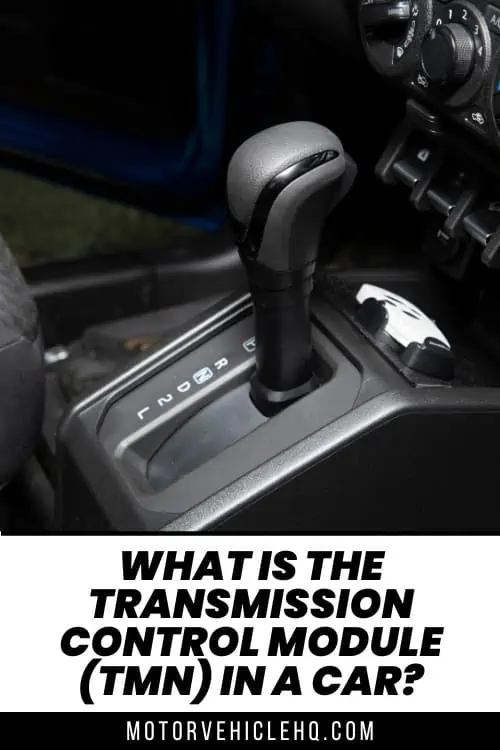

Jim Wicks is the founder of MotorVehicleHQ. With over two decades of experience in the automotive industry and a degree in Automotive Technology, Jim is a certified car expert who has worked in various roles ranging from a mechanic, car dealership manager, to a racing car driver. He has owned more than 20 cars over the past 15 years. Ask him about any vehicle you see on the road and he can tell you the make, model and year. He loves the aesthetics of all things cars, and keeps his vehicles in pristine condition.
In his free time, Jim enjoys getting his hands dirty under the hood of a classic car or taking long drives along the country roads. His favorite car? A 1967 Shelby GT500, a true classic that, according to Jim, “represents the pure essence of American muscle.”
